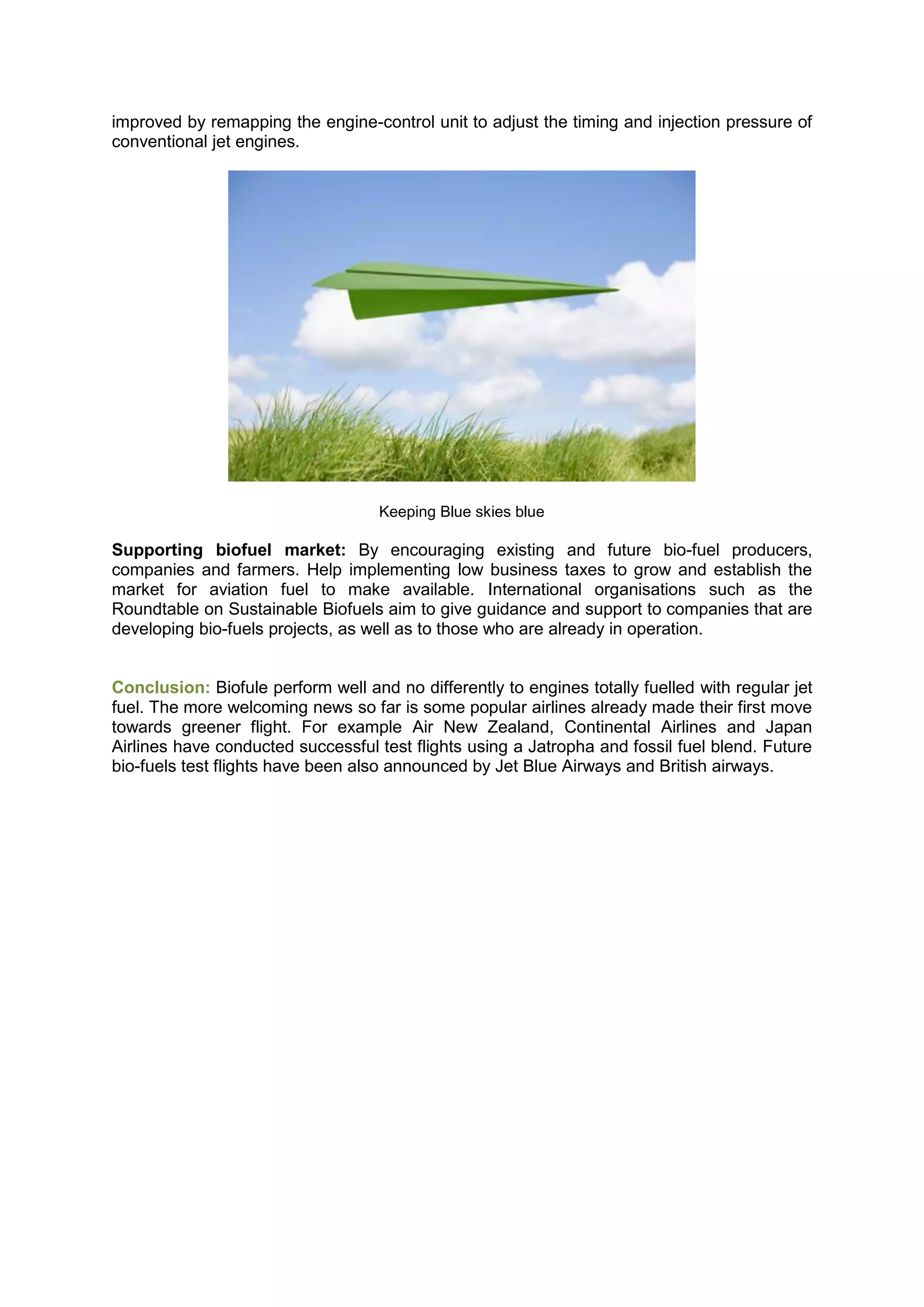The document proposes biofuels as a more eco-friendly alternative aviation fuel. It discusses using algae and biomass to produce biofuel. Algae can be grown and processed to extract oil that is then processed into biofuel. Biomass fuel can be produced from waste materials through gasification processes. Potential benefits include reduced CO2 emissions, diversified fuel supply, and economic and social gains for developing areas. The proposal argues that biofuels could help support greener aviation in the future.


